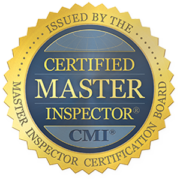Why Do You Need A Sewer Scope Inspection
Having the sewer scope inspection on a home gives the inspector a visual eye on the condition of the sewer line. This can save you thousands of dollars along with giving you insight into potential future issues. Over time the line can become obstructed, separated, or pipes can leak or break, resulting in costly repairs ranging from $2,500 up to $10,000.
Obstructions can cause water to back up in your home. It can also cause slow drainage which can lead to cracked pipes. Leaking pipes can result in cracks in the foundation of your home, a foul smell, mold, contamination of water supply, and even pest invasion. These are the kinds of issues that need to be addressed immediately as they can also lead to health hazards.
A sewer scope is a video inspection of the part of the lateral sewer line that is owned by the homeowner, whose responsibility it is to maintain and repair. Cast iron piping corrodes from the inside out causing layers of rust to obstruct the flow. Clay tile is fragile and porous, and easily broken through by tree roots. PVC piping can crack and separate over time.
The scope will be performed through either an interior or exterior access point. Leaks and backups will be checked for at the access point. The scope will be inserted on a cable through the line to video and document findings along the way. As a trained and certified inspector, a thorough inspection report will be provided with findings and recommendations.
If you want to know what kind of other problems you might encounter with your plumbing system, here are some things to keep in mind.


